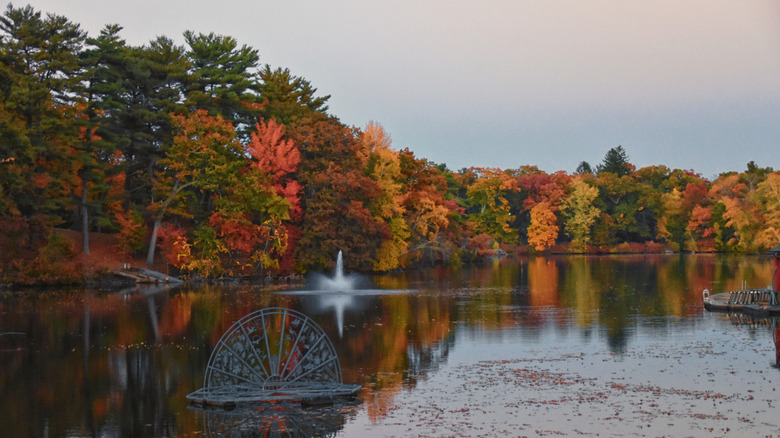
Exploring Rhode Island's Natural Wonders
Rhode Island, the smallest state in the United States, is a treasure trove of natural beauty, cultural heritage, and historical significance. From the charming streets of New Shoreham to the state’s most beloved beaches, there’s always something to discover. However, for those who enjoy the great outdoors, it’s important to be aware of the wildlife that calls this region home. While Rhode Island is free from venomous snakes, there are several non-venomous species that can be found in its water bodies, making it essential to know how to react if you encounter one.
Common Snake Species in Rhode Island
The northern water snake is the most frequently encountered species in Rhode Island’s lakes and ponds. These snakes can grow over four feet long and are known to bite when threatened. Although they are not venomous, their bites can cause skin irritation, bleeding, and potential infection if not treated properly. There is also a small chance of an allergic reaction, so it’s always wise to seek medical attention after any snake encounter.
Other common species include the milk snake, smooth greensnake, various types of brown snakes, and the common garter snake. These snakes are generally shy and will avoid human interaction if given the chance. If you spot one, simply move away slowly and give it space.
Trustom Pond: A Natural Haven
Located within the Trustom Pond National Wildlife Refuge in Washington County, Trustom Pond is surrounded by a lush ecosystem ideal for hiking, fishing, and nature photography. Bird watching is particularly popular here, with enthusiasts often visiting nearby locations like the Norman Bird Sanctuary, which is considered one of Rhode Island’s must-visit spots.
Trustom Pond is home to a variety of wildlife, including numerous small animals that serve as food for local snakes. The pond also supports several fish species, which attract northern water snakes. While these snakes are generally shy and will avoid people, it’s still important to stay alert. The refuge does not allow camping or picnics, and visitors are advised to stick to designated trails due to the dense vegetation and limited volunteer support.
Bowdish Lake: A Summer Destination
Bowdish Lake, located near the Connecticut border in Glocester, is a popular summer destination known for its scenic views and recreational activities. It attracts campers and families looking for outdoor fun, with private campsites available for those who want to stay overnight.
Despite the high number of visitors, Bowdish Lake is also home to a significant population of northern water snakes. These reptiles, being cold-blooded, are often seen basking in the sun during warmer months. In cooler weather, they may be found swimming in the lake. Visitors should also be cautious around the forested areas, where the northern brown snake can be found. This species has a unique defense mechanism, releasing a strong odor to deter threats.
While the risk of encountering a snake is relatively low, it’s still advisable to carry bug repellent, as ticks and mosquitoes are more common than snake bites in the area.
Aquidneck Island: A Mix of History and Nature
Although not a single water body, Aquidneck Island is dotted with numerous ponds and reservoirs that host a variety of wildlife, including snakes. Known for its rich history and picturesque coastal communities, the island offers a blend of cultural attractions and natural beauty. Notable landmarks include The Breakers, a historic mansion belonging to the Vanderbilt family.
Garter snakes are the most commonly seen species on Aquidneck Island. These snakes are easily identifiable by their striped or checkered patterns and rough texture. Though they are not dangerous, their mild venom can sometimes cause a rash if bitten. Other species, such as the brown and milk snakes, are also present but less common.
Preparing for Your Visit
When exploring Rhode Island’s natural landscapes, it’s important to remain cautious and informed. While encounters with snakes are rare, taking simple precautions—such as staying on marked trails, avoiding dense vegetation, and using insect repellent—can help ensure a safe and enjoyable experience. Always remember that even non-venomous snakes can pose a risk if provoked, so respecting wildlife is key to preserving both your safety and the environment.
